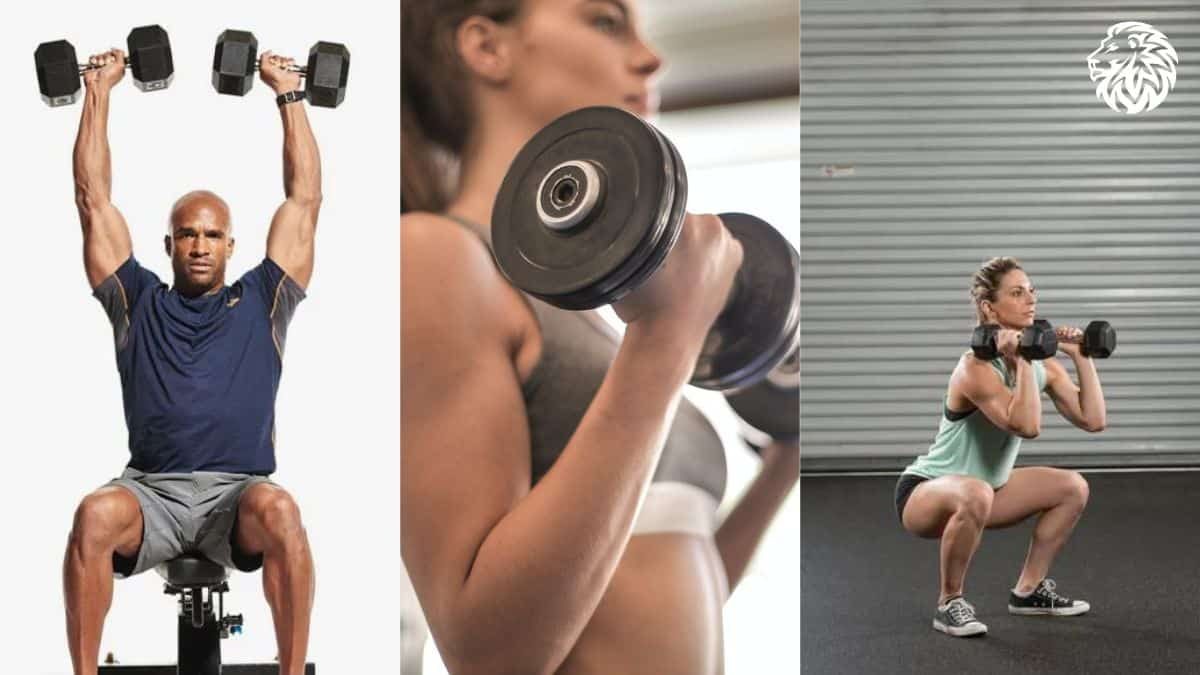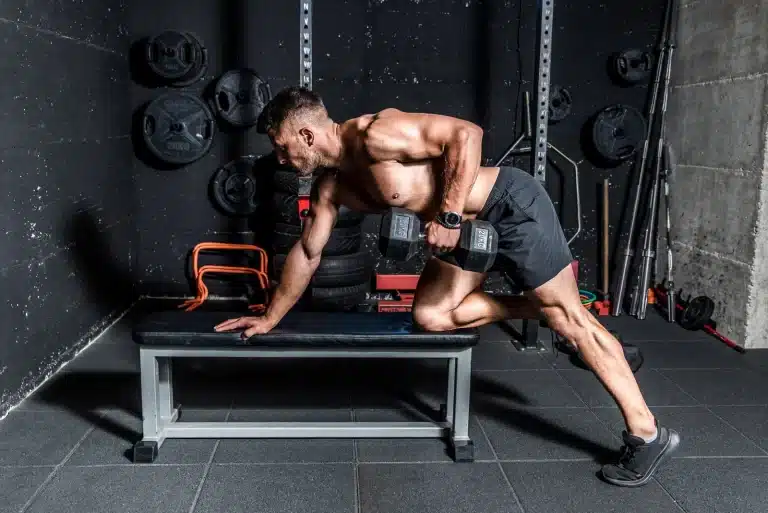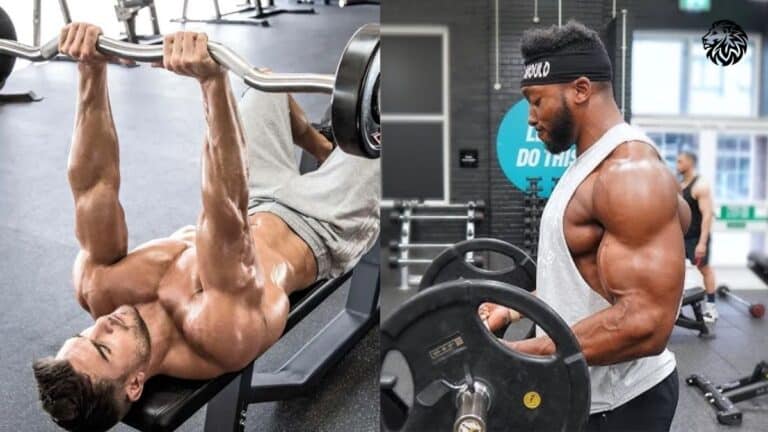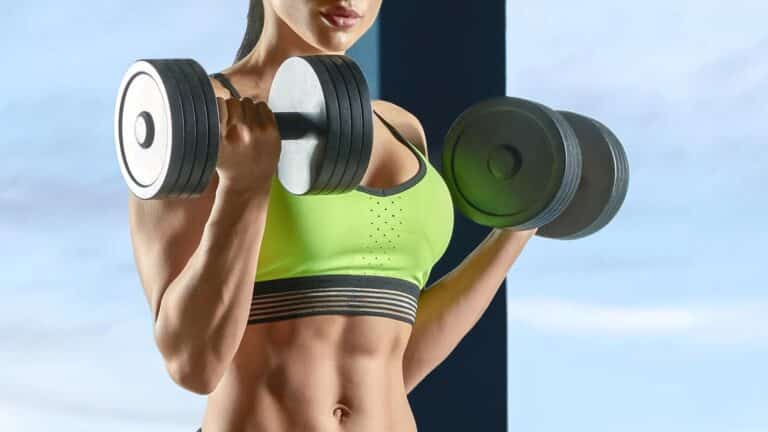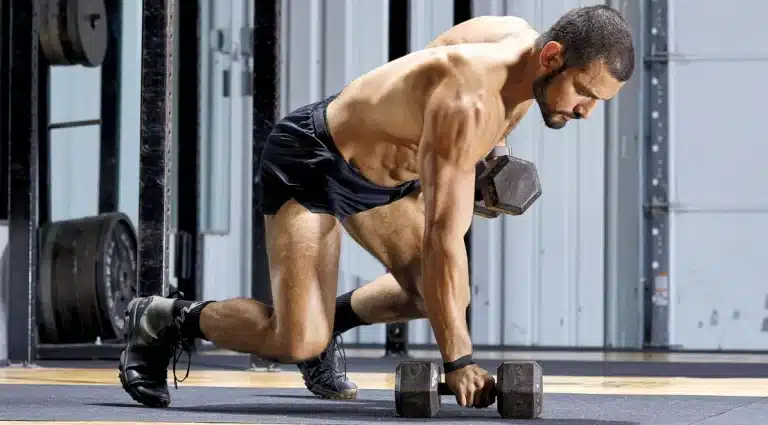The Push-Pull-Legs routine is a popular and effective workout strategy designed to cover all major muscle groups in a balanced and structured manner. This routine splits the workout into three types: push exercises that target the chest, shoulders, and triceps; pull exercises for the back and biceps; and leg exercises for the lower body. It provides a comprehensive approach to strength training, ensuring each muscle group gets adequate focus and recovery time.
Dumbbells are versatile, space-efficient, and relatively affordable, making them ideal for home workouts. They allow for a wide range of exercises, providing flexibility in training different muscle groups. Using dumbbells at home can also offer convenience and comfort, eliminating the need for a gym membership and providing the ability to work out on your own schedule. Additionally, dumbbell exercises can be easily scaled in difficulty and are suitable for all fitness levels.
Having a structured exercise regimen like the Push-Pull-Leg routine helps in maintaining consistency, ensuring balanced muscle development, and reducing the risk of injury. It guides practitioners in focusing on different muscle groups systematically, allowing for more effective and measurable progress. Such a regimen can also help in avoiding workout plateaus and keeping the exercise sessions dynamic and engaging. A well-planned routine is crucial for anyone looking to achieve specific fitness goals, whether it’s building muscle, improving strength, or enhancing overall fitness.
Preparing for the Routine

Selecting the Right Dumbbells
Choosing the appropriate dumbbells is crucial for an effective workout. Consider factors like the dumbbell’s weight range, material (rubber, neoprene, or metal), and the type (fixed weight or adjustable). Beginners should start with lighter weights and gradually increase as strength improves. Adjustable dumbbells can be a cost-effective and space-saving choice, as they offer a range of weights in one piece of equipment. It’s important to have a variety that allows you to perform all exercises with proper form while still being challenging.
Creating a Workout Space at Home
Having a dedicated workout space can significantly enhance your exercise routine. This space doesn’t need to be large, but it should be free of clutter and safe. Ensure there’s enough room to move around and perform exercises without restrictions. Good lighting and ventilation are also important. If possible, include a mirror to monitor your form. You may also want to consider a mat for comfort during floor exercises and to protect your flooring.
Understanding Safety and Form
Safety is paramount, especially when working out at home without a trainer’s supervision. Educate yourself on the correct form for each exercise to prevent injuries. This can be done through instructional videos or fitness apps. Pay attention to your body’s signals; if something feels wrong, stop immediately. Understanding how to properly grip the dumbbells and maintain your posture is also key. Start with lower weights to master the form before progressing. Additionally, ensure you’re performing a proper warm-up before each session and a cool-down afterwards to prepare your muscles and prevent stiffness.
Push-Pull-Leg Muscle Building Routine Using Only Dumbbells
Push Day: Building Upper Body Strength
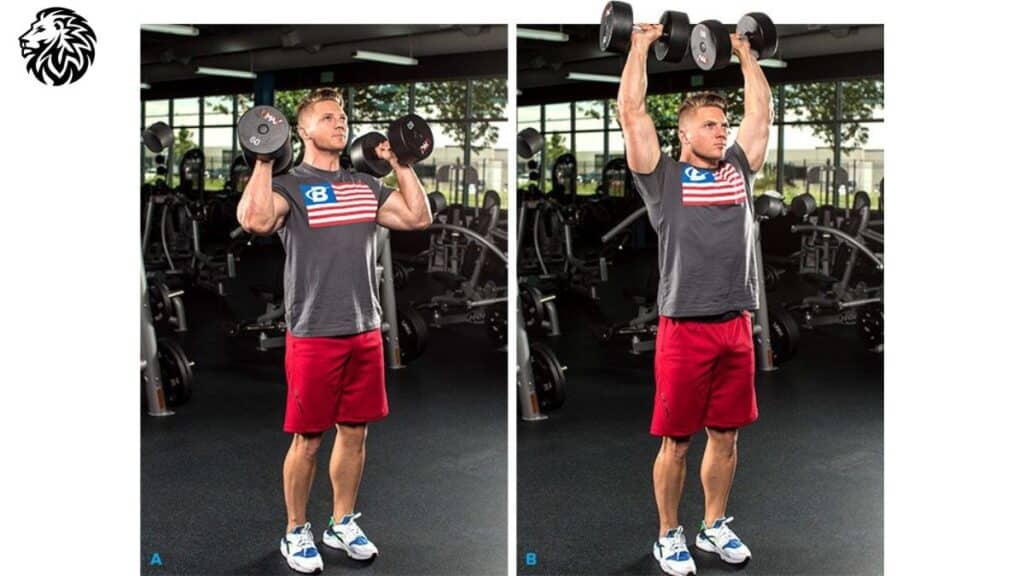
Exercises Overview
- Dumbbell Bench Press: This compound exercise targets the chest, shoulders, and triceps. It involves lying on a bench and pressing dumbbells upwards from chest level.
- Dumbbell Overhead Press: Primarily focusing on the shoulders and triceps, this exercise is performed by pressing dumbbells overhead from a seated or standing position.
- Dumbbell Flyes: Done by lying on a bench, this exercise targets the chest muscles. It involves moving the dumbbells in an arc, keeping the arms slightly bent.
- Tricep Dumbbell Kickbacks: This is an isolation exercise for the triceps. It’s performed by leaning forward with one hand supported and extending the arm with the dumbbell backward.
- Dumbbell Side Lateral Raises: An isolation exercise for the shoulder muscles, particularly the lateral deltoids. It involves lifting dumbbells out to the sides with arms slightly bent.
Technique and Tips
- For the Dumbbell Bench Press, maintain a controlled motion and avoid locking your elbows at the top of the lift. Keep your feet flat on the ground for stability.
- In the Dumbbell Overhead Press, keep your core engaged and avoid arching your back. The dumbbells should be lifted straight overhead without swaying.
- During Dumbbell Flyes, ensure the movement is steady and controlled. Avoid dropping your arms too low to prevent shoulder strain.
- For Tricep Dumbbell Kickbacks, keep your back straight and elbow stationary. The movement should only occur at the elbow joint.
- When performing Dumbbell Side Lateral Raises, lift only to shoulder height and lower slowly. Avoid using momentum to lift the weights.
Benefits of Each Exercise
- Dumbbell Bench Press: Builds overall chest mass and strength, also engages the triceps and shoulders.
- Dumbbell Overhead Press: Develops shoulder strength and size, also works the upper portion of the chest and the triceps.
- Dumbbell Flyes: Focuses on the pectoral muscles, enhancing chest width and definition.
- Tricep Dumbbell Kickbacks: Isolates the triceps, crucial for overall arm definition and strength.
- Dumbbell Side Lateral Raises: Targets the side shoulders, essential for a broader, more defined shoulder appearance.
Pull Day: Enhancing Back and Biceps
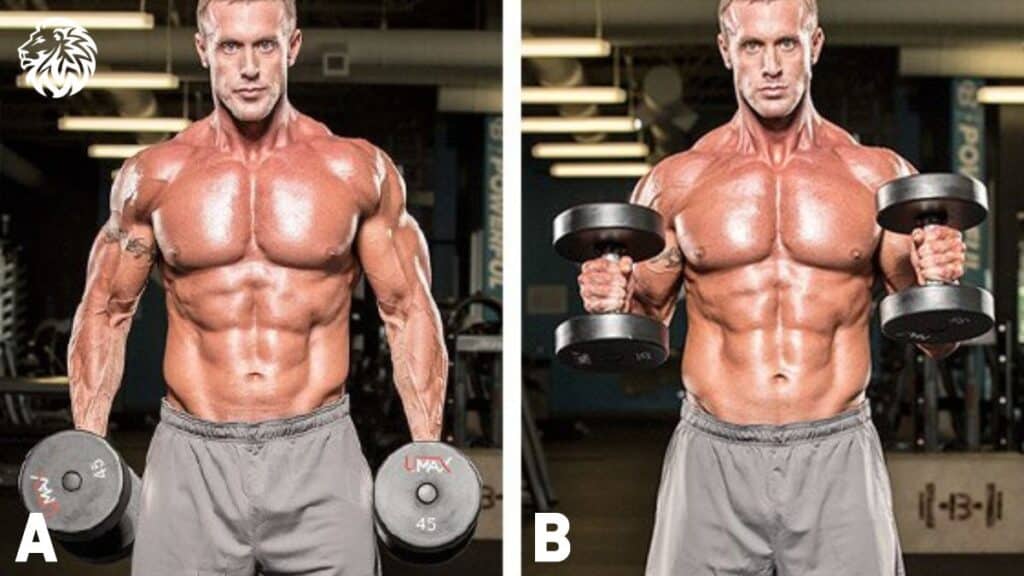
Exercises Overview
- Dumbbell Rows: This exercise primarily targets the back muscles, particularly the latissimus dorsi. It involves pulling a dumbbell upwards towards your torso while in a bent-over position.
- Dumbbell Bicep Curls: A fundamental exercise for the biceps, it involves lifting the dumbbells from a hanging position up to your shoulders with a curling motion.
- Dumbbell Hammer Curls: Similar to bicep curls, but with the palms facing each other. This variation also works the forearms along with the biceps.
- Dumbbell Shrugs: This exercise targets the upper trapezius muscles in the neck and upper back. It involves shrugging the shoulders upwards while holding dumbbells.
- Dumbbell Reverse Flyes: Focusing on the rear deltoids and upper back, this exercise is performed by lifting the dumbbells outward from a bent-over position, keeping the arms slightly bent.
Focus on Form and Control
- In Dumbbell Rows, keep your back straight and pull the weight using your back muscles, not just your arms. Keep your elbow close to your body.
- For Dumbbell Bicep Curls, ensure that you move only your forearms, keeping your elbows stationary at your sides. Avoid swinging the dumbbells.
- During Dumbbell Hammer Curls, maintain a controlled motion and avoid rotating your wrists. Keep the movement steady and focused.
- When performing Dumbbell Shrugs, lift your shoulders straight up and avoid rolling them. The movement should be vertical with a pause at the top.
- In Dumbbell Reverse Flyes, keep your back flat and avoid using momentum to lift the weights. The movement should come from your shoulder blades drawing together.
Key Benefits
- Dumbbell Rows: Strengthens the back muscles, improving posture and providing support for daily activities.
- Dumbbell Bicep Curls: Builds bicep muscles, essential for lifting and pulling movements.
- Dumbbell Hammer Curls: Enhances grip strength and targets both the biceps and forearms.
- Dumbbell Shrugs: Develops the trapezius muscles, crucial for neck, shoulder, and upper back strength.
- Dumbbell Reverse Flyes: Strengthens the rear deltoids and upper back, balancing shoulder development and aiding in posture correction.
Leg Day: Lower Body Development
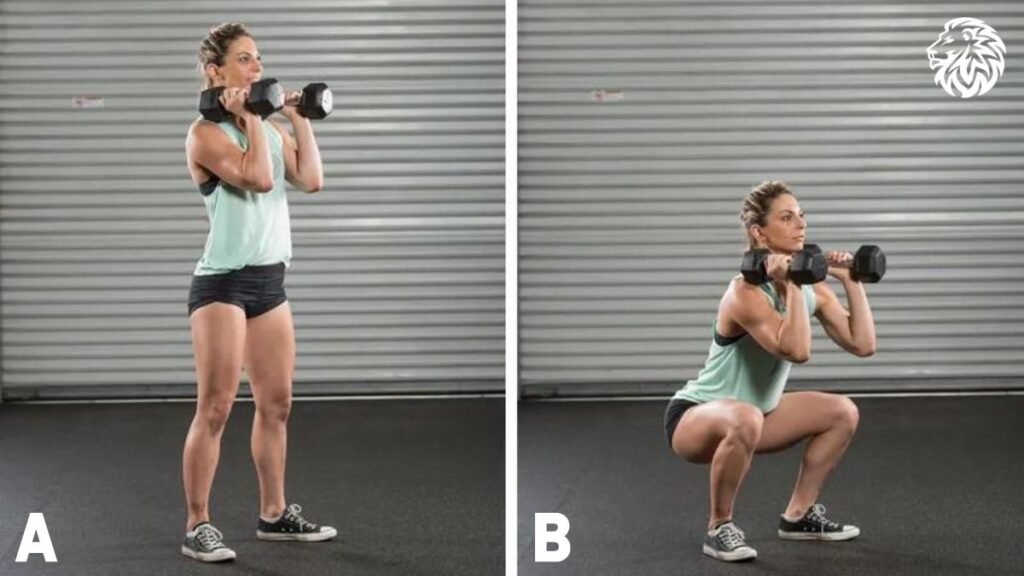
Exercises Overview
- Dumbbell Squats: A fundamental exercise for overall leg strength, targeting the quadriceps, hamstrings, and glutes. It involves holding dumbbells at your sides or at shoulder level and performing a squat.
- Dumbbell Lunges: This exercise works on the quads, hamstrings, and glutes. It involves stepping forward into a lunge position while holding dumbbells.
- Dumbbell Deadlifts: Primarily targeting the lower back, hamstrings, and glutes, this exercise involves lifting dumbbells from the ground with a straight back.
- Dumbbell Calf Raises: Focusing on the calf muscles, this exercise is performed by raising the heels off the ground while holding dumbbells.
- Dumbbell Step-Ups: This exercise targets the quadriceps, hamstrings, and glutes. It involves stepping onto an elevated platform or bench while holding dumbbells.
Importance of Leg Training
Leg training is essential for a balanced fitness regimen. It builds the foundation for overall body strength and stability, which is crucial for daily activities and athletic performance. Strong legs can improve balance, enhance endurance, and reduce the risk of injury. Additionally, leg workouts can contribute to a higher metabolic rate as larger muscle groups consume more energy, aiding in fat loss and overall fitness.
Safety and Efficiency
- Dumbbell Squats: Keep your back straight and chest up. Ensure your knees do not extend past your toes and squat down to at least a 90-degree angle.
- Dumbbell Lunges: Maintain a straight posture and avoid leaning forward. Step forward with one leg and lower your body until the rear knee nearly touches the ground.
- Dumbbell Deadlifts: Keep your back flat and lift with your legs, not your back. Avoid rounding your spine and lift the dumbbells close to your body.
- Dumbbell Calf Raises: Perform the raises with controlled movements, avoiding bouncing or jerking. You can do this exercise with one leg at a time for added intensity.
- Dumbbell Step-Ups: Step onto a sturdy platform and focus on using the leg on the platform to lift your body, rather than pushing off with the lower leg.
Safety is paramount in leg exercises to prevent injury. It’s important to choose appropriate weights and increase gradually. Always warm up before starting the workout and stretch after completing your routine to maintain flexibility and reduce muscle soreness.
Here’s a simple routine you can follow:
- Push Day (Chest, Shoulders, Triceps):
- Dumbbell Bench Press: 3 sets of 8-12 reps
- Dumbbell Overhead Press: 3 sets of 8-12 reps
- Dumbbell Flyes: 3 sets of 8-12 reps
- Tricep Dumbbell Kickbacks: 3 sets of 8-12 reps
- Dumbbell Side Lateral Raises: 3 sets of 12-15 reps
- Pull Day (Back, Biceps):
- Dumbbell Rows: 3 sets of 8-12 reps per arm
- Dumbbell Bicep Curls: 3 sets of 8-12 reps
- Dumbbell Hammer Curls: 3 sets of 8-12 reps
- Dumbbell Shrugs: 3 sets of 12-15 reps
- Dumbbell Reverse Flyes: 3 sets of 12-15 reps
- Leg Day (Quads, Hamstrings, Calves):
- Dumbbell Squats: 3 sets of 8-12 reps
- Dumbbell Lunges: 3 sets of 8-12 reps per leg
- Dumbbell Deadlifts: 3 sets of 8-12 reps
- Dumbbell Calf Raises: 3 sets of 15-20 reps
- Dumbbell Step-Ups: 3 sets of 8-12 reps per leg
Rest for 1-2 minutes between sets. It’s important to adjust the weight so that the last few reps of each set are challenging, but still allow you to maintain good form. Also, ensure to have at least one rest day between each workout day to allow your muscles to recover. Remember to warm up before and cool down after your workout sessions.
Recovery and Nutrition
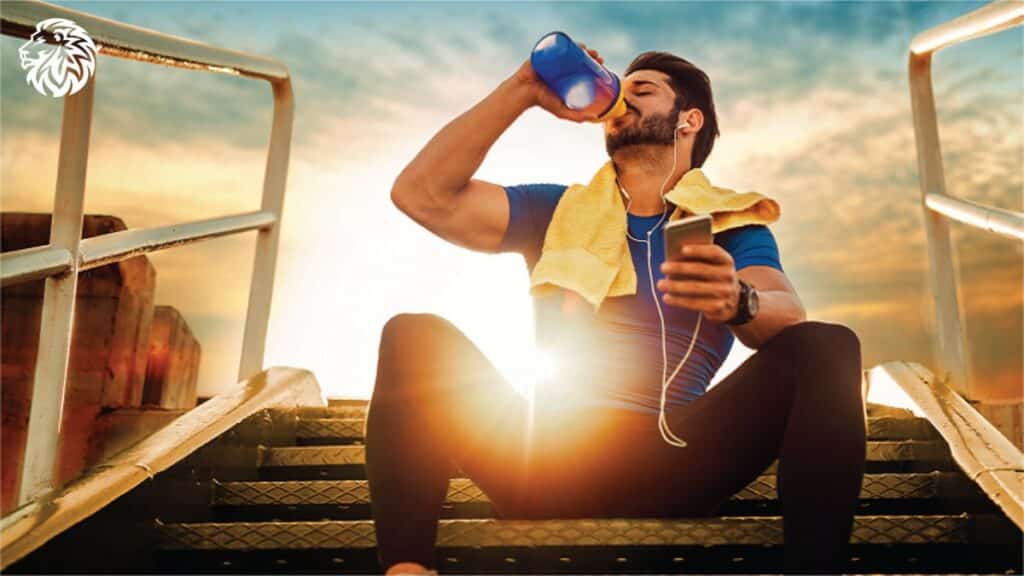
Importance of Rest Days
Rest days are crucial in any workout regimen, particularly in a program as intense as the Push-Pull-Leg routine. They allow your muscles to recover from the stress of exercise, which is essential for muscle growth and strength gains. Overtraining can lead to fatigue, decreased performance, and increased risk of injury. Rest days also provide mental relief, preventing burnout and keeping motivation high. Active recovery, involving light activities like walking or yoga, can be beneficial during rest days to maintain mobility and aid in muscle recovery.
Nutritional Guidelines for Muscle Growth
Proper nutrition is key to muscle growth and overall health. A balanced diet that includes a mix of protein, carbohydrates, and healthy fats is essential.
- Protein: Vital for muscle repair and growth. Include lean meats, fish, dairy, eggs, and plant-based sources like beans and legumes in your diet.
- Carbohydrates: Provide energy for your workouts. Focus on complex carbohydrates like whole grains, fruits, and vegetables.
- Healthy Fats: Important for hormone production and joint health. Include sources like avocados, nuts, seeds, and olive oil.
- Meal Timing: Eating a mix of protein and carbs after a workout can help with muscle recovery and energy replenishment.
- Caloric Intake: Ensure you’re consuming enough calories to fuel your workouts and muscle growth, but be mindful not to overeat.
Hydration and Sleep
Hydration is essential for overall health and optimal workout performance. Water aids in digestion, nutrient absorption, and muscle recovery. Aim to drink enough water throughout the day, with an emphasis on hydrating before, during, and after workouts.
Sleep is another critical component of recovery. Quality sleep supports muscle repair, cognitive function, and hormonal balance. Most adults need 7-9 hours of sleep per night. Establishing a consistent sleep schedule and creating a restful environment can significantly improve sleep quality.
By focusing on recovery, nutrition, hydration, and sleep, you can maximize the benefits of the Push-Pull-Leg routine and achieve your fitness goals more effectively.
Progress Tracking and Adaptation
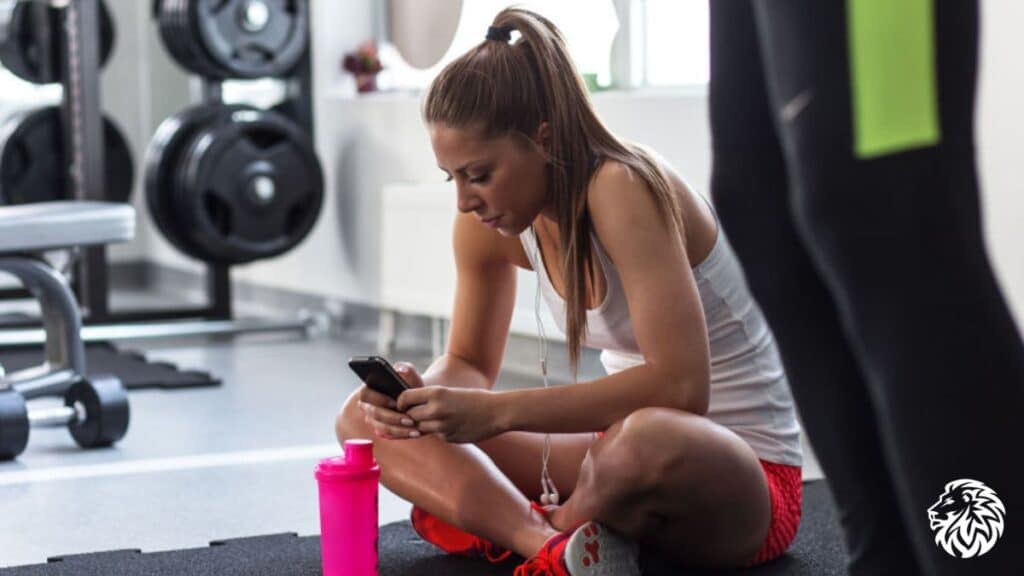
Keeping a Workout Log
Maintaining a workout log is an effective way to track progress, set goals, and stay motivated. In your log, record the exercises, weights used, number of repetitions and sets, and any notes on how the workout felt. This record-keeping allows you to see your improvements over time and helps in planning future workouts. Additionally, it can be motivating to look back and see how far you’ve come, especially on days when you might feel less inspired.
Adjusting Weights and Reps
As you progress in your fitness journey, it’s important to continually challenge your muscles to grow and strengthen. This can be achieved by increasing the weights you lift or changing the number of repetitions and sets. A common approach is to increase the weight when you can comfortably complete the upper range of repetitions with good form. Alternatively, you can increase the number of reps or sets with the same weight, known as volume training. Regularly adjusting your routine helps in continuous muscle development and prevents stagnation.
Recognizing and Overcoming Plateaus
A plateau occurs when you no longer see progress despite consistent workouts. This can be due to various factors like overtraining, under-recovery, or a diet that doesn’t support your workout intensity. To overcome plateaus, first evaluate your recovery and nutrition. Ensure you’re getting enough rest and your diet aligns with your fitness goals. Varying your workout routine can also help. This might mean changing the exercises, adjusting the rep and set scheme, or incorporating different types of training like supersets or drop sets. Listening to your body and being willing to adapt your training and recovery strategies are key to continuous improvement and reaching your fitness goals.
Conclusion
The Push-Pull-Leg routine with dumbbells is a comprehensive, balanced approach to strength training that offers numerous benefits. It targets all major muscle groups, ensuring a well-rounded development and minimizing the risk of muscle imbalances. This routine enhances overall strength, improves muscle tone, and can boost metabolic rate, aiding in fat loss. The flexibility of using dumbbells at home makes this regimen accessible and convenient, allowing for a consistent workout schedule regardless of external factors like gym availability or time constraints.
Consistency is key to seeing results in any fitness program. It’s important to stay committed to your routine, even on days when motivation may be low. Remember, progress in strength training is often gradual, and consistent effort over time yields the best results. Setting realistic goals and tracking your progress can help maintain motivation. Celebrate the small victories along the way, like lifting heavier weights, completing more reps, or just feeling stronger and more energetic in daily life.
Final Thoughts on Home-Based Strength Training
Home-based strength training with a Push-Pull-Leg routine is an effective and practical way to achieve fitness goals. It offers the flexibility to work out on your own terms and the simplicity of using minimal equipment. While this approach is convenient, it’s also important to focus on proper form, balanced nutrition, and adequate rest and recovery. Embracing this holistic approach to fitness can lead to significant improvements in physical health, mental well-being, and overall quality of life. Remember, the journey to fitness is personal and unique to each individual, so tailor the routine to fit your needs and enjoy the process of becoming a stronger, healthier you.
